
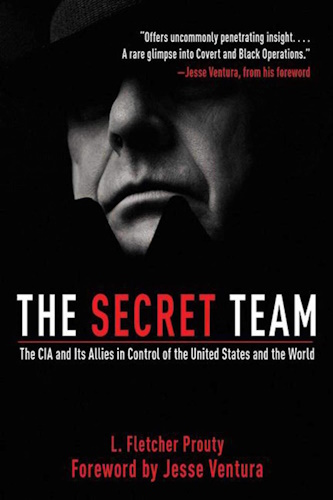
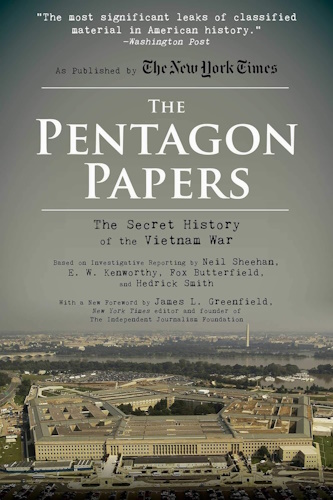

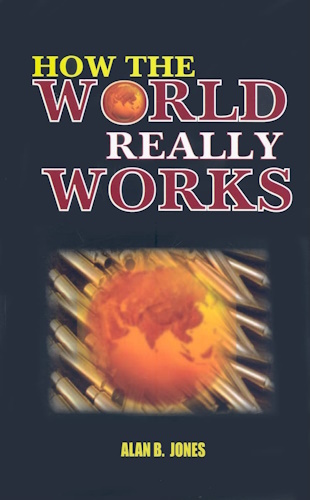

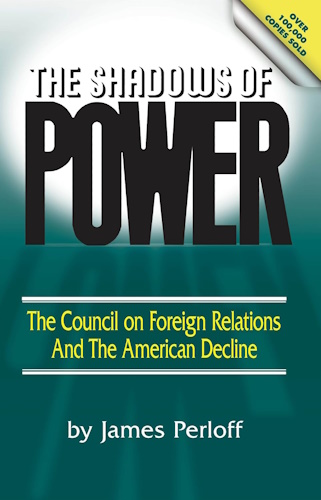

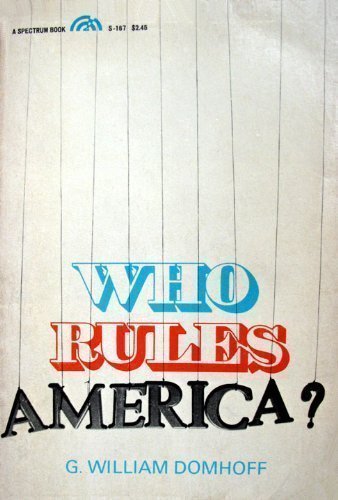

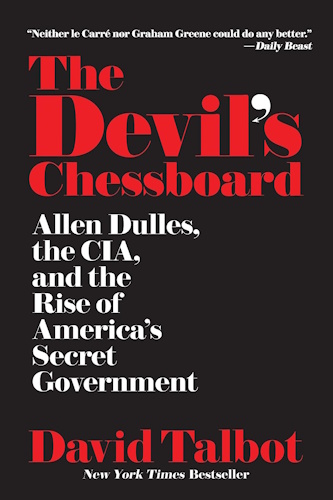
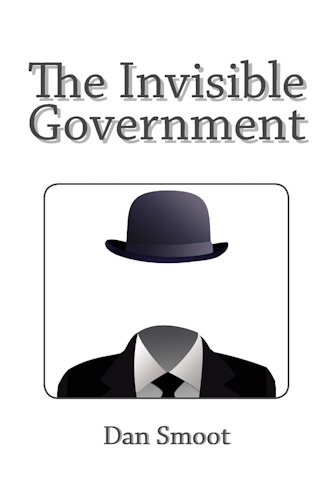

![]()
![]()
PART III
THE CIA: HOW IT IS ORGANIZED
Chapter 14
Transportation: Anywhere in the World -- Now
In moonlight so clear that the high Himalayas could be seen one hundred miles away, an Air Force C-130 transport flew over the multinational border region of Laos, Burma, and China. In the cargo compartment a small, highly skilled team of Tibetan Khamba tribesmen huddled quietly beside the heavy airdrop pallets that lined the center compartment. Under a dim light in the forward part of the huge cargo area, four Agency men played nickel-and-dime poker while they sipped hot coffee from the plane's airborne kitchen hotplate. The crew peered into the darkness at brilliant stars guiding them on into the vast remoteness of Western China. From time to time the navigator was busy taking star shots to verify the electronic navigation signals he was getting, but which were growing dimmer and less reliable as each hour passed.
The Operations officials of the Agency had directed that the crew fly as low and as close to the horizon as they could with safety, so that that their radar profile would be obscured by ground clutter. This same low pattern played havoc with long-range navigational signals from remote sites. But this gave the experienced crew little concern. The C-130 was in fine shape, the four turboprop engines purred in their sleek nacelles, and fuel flow was well within the flight-plan parameters. Precise navigation at this point was essential only to verify wind conditions and to warn if major shifts in strength and direction might have an impact upon total effective range. They knew that this mission was going to demand all the range the C-130 had, and a little more. The target for the airdrop of the Khambas and the black cargo was in the vicinity of Koko Nor, deep in the outback of unknown China.
A trainload of olive-drab Gl six-by-six U.S. Army trucks had been delivered to a siding in North Carolina. A crew of men had worked for days unloading the trucks and towing them to a small remote dockside facility for loading onto an old, World War II front-loading landing craft. Another old, but newly shipshape, vessel lay at anchor, ready to shove off for the south as soon as the last shipment of trucks had been hoisted aboard. Both ships, with skeleton crews, slipped out of the port quietly and ran southward to Puerto Rico, where they would await orders to join the small armada bound for an unknown beach in the Bay of Pigs region of western Cuba.
The temperature sometimes reached 125 degrees, perhaps even 135 degrees, in the scorching sunlight of northern Libya. The jet fighters lining the runways shimmered in the ever-present mirage that hung over the concrete runways. Men fueling these planes wore heavy gloves, in spite of the intense heat, to protect themselves from burns. Far across this huge base in the remote area reserved for rockets and other armament, a few low outbuildings were the only evidence of a below-ground ammunition and arms cache of a most unusual nature. A steady stream of trucks had been weaving back and forth all day from the huge C-124 transport planes to this dump area to unload heavy cases of guns. These were not the usual World War II leftovers. These were British Enfields, French guns, and most important, they were a good mix of guns from Iron Curtain countries, picked up from many sources, including war-captured booty from the Israeli campaign in the Sinai Desert.
The common thread through all of these anecdotes is the fact that in every case the Agency was operating in its own interest with transportation provided by the military forces. The aircraft belonged to the U.S. Air Force. The trucks and the special flatbed rail carriers were provided by the U. S. Army. And the ships that made the run to Cuba had been U.S. Navy equipment, refitted for use in that operation. The Agency has ready access to all kinds of transportation all over the world in the global transportation system of the Department of Defense. This great network gives the Agency the opportunity to carry out its work behind the screen of regular military movements. This saves the CIA the problem of covering the bulk of its movements, and it saves a tremendous amount of money. Again, this is money that the Agency usually protests it will gladly reimburse to the prime agent of the DOD, provided it is billed for it. Most shipments made by the CIA through the military networks are made to and from Agency cover units using military designations. The cost therefore is not identifiable unless a knowledgeable person intercepts the shipment. This is not likely, because the Agency will protest and the top echelons of the service will support it that the high classification of the shipment precludes such identification. Thus the bulk airlift of tons of guns, which would mean nothing to military shipping clerks, travels without charge under the guise of secrecy.
Much military shipment is made by contract airlift. During the peak Vietnam operation years, the total of military-purchased contract-airlift averaged three quarters of a billion dollars per year. With the CIA responsible for a $1 billion a year "pacification" program in Vietnam, it can be seen that the Agency's share of that airlift could have been appreciable; yet the chances are very good that no one ever knew just which shipments were Agency shipments and what to charge for them or how to collect reimbursement for them. When one reflects upon the early days of the CIA and upon the serious precautions taken to assure that the CIA would not grow beyond the size of a small, truly special operations capability, it is most significant to remember how all of this was done and how it has become such a normal and accepted practice today that at times even the U.S. Army has moved into certain operations under the cover of the CIA.
When the CIA leaves the realm of the DOD and must strike out for itself into non-military areas and into areas where military relationships must be abandoned, it is able to use its own funds to provide its own first-class transportation to meet the situation. Most Agency personnel going overseas do so under one form of military cover or other, and as a result they travel on military aircraft or military contract shipping. This includes their household goods and other equipment as well. But there are times when CIA personnel cannot travel as military personnel, and then they travel as ordinary civilians and utilize all other means available.
In foreign countries, the CIA procures fleets of indigenous vehicles to be able to pass more easily among the population among whom they will be working. It would be unwise for some man, attempting to be inconspicuous in Istanbul, to be seen driving around that crowded city in a new Buick or Chrysler. More than likely, the Agency will see that he has a Volkswagen or Renault, and perhaps one that is a few years old. In like manner, the Agency purchases civilian aircraft and boats of various types and sizes, to meet other special requirements. I have known of CIA personnel traveling in dog-sled parties and in sleek civilian business jets.
The Agency does not want for transportation anytime, anywhere, and of any type, and they get so much of it free or for so little relative cost that what they need over and above the bulk military support, their own funds are more than adequate to provide. The Agency has a very large and special fleet of its own equipment, most of which is covered as commercial equipment. At the time of the Bay of Pigs invasion, the CIA used landing ships of World War II origin, which it had purchased from surplus sources and then refitted for the occasion. In other water moves, the CIA has used special Norwegian-built high speed boats, and it has used small, light canoes. In such instances, the Agency mans these vessels with its own personnel, and augments the agent cadre with experienced men when necessary. Where the Agency excels in this business is with its many clandestine airlines, which are scattered throughout the United States and around the world. The most famous of these is Air America.
Air America, the airline of the flying mercenaries, conjures up stories true and imagined, real and unreal, of the Dragon Lady and Terry and the Pirates and of deep, secret missions into rebel-held territory in countries from faraway Asia to Latin America. Air America, Incorporated, is a worldwide operation, chartered in Delaware and listed solidly in Dun and Bradstreet. Its main offices are within a few hundred yards of the White House, on Washington's posh Connecticut Avenue, and it numbers among its directors many famous names, including several former Navy admirals who have at one time or other been Commanders in Chief, Pacific (CINCPAC). Air America is a most important adjunct of the CIA.
When the travel to Mecca is heaviest with the devout Moslems involved in the hadj, a nondescript old transport aircraft will shuttle pilgrims across the Arabian desert. When summer travel peaks in Europe and thousands of students hire charter planes to take them to an international peace festival in Munich, among these available planes will be aircraft belonging to Air America and flying under one of its countless cover, subordinate companies. If the Agency wishes to make a clandestine cargo drop in some out-of-the-way place like Burma, Pakistan, or Indonesia, a perfectly normal appearing commercial transport aircraft will find itself on business through and around that area for a while, until any suspicion that might be aroused has died down; then on one special flight it will open its rear cargo door and para-drop the supplies, equipment, and perhaps agents over the selected target zone.
The men of Air America are legendary, from the incomparable "Earthquake" McCoon, who lost his life over Dien Bien Phu in an unarmed C-119, to nameless and faceless Chinese and Anzacs, who have flown for Air America on flights that would make fiction accounts tame by comparison.
In the middle nineteen fifties, it became necessary to resupply Agency outposts deep in Laos. The usual DC-3 or C-46 from World War II surplus stockpiles required too much runway for some of these rugged areas. Helicopters lacked the range and load-carrying ability required. The CIA turned to light planes and worked with the native tribesmen to clear landing strips deep in the forested valleys of Laos. For a short time these strips were useful, until their adversaries found them and showered them with gunfire from the surrounding mountainsides.
Air America came in and selected landing sites in the most precarious positions. It had become expert in the use of a small, special plane used by the Air Force Special Air Warfare squadrons and by the Army Special Forces troops. This plane was called the L-28, or commercially, the Helio Courier. It was as rugged as a Jeep and could land and take off in remarkably short distances. This ability to land and take off in short distances is not by itself sufficient to commend an aircraft to this special use. Almost any light plane can, with a big engine, take off or land from short distances. However, once that same plane is in the air, if it does not have superior control surfaces and other slow flying characteristics designed for really slow-speed control in the air, it will be lethal in regular service. The Agency learned this the hard way when it and the United States Information Agency (USIA) missions attempted to use other aircraft that seemed able to do the job and were a little cheaper. More than 50 percent of those planes crashed in the first year of use. Meanwhile, the Air America planes and experienced crews actually operated from fantastically short and crude airstrips, which had been cleared by the natives on top of the ridge lines of the high, forested mountains of Laos. Even today, the flight handbook for pilots in Southeast Asia speaks of two categories of landing grounds in Laos -- regular and Helio. Air America and the rugged Helio have made an unheralded and unequaled record all over Laos.
Air America is not a small unseen company. At two bases alone, one in Thailand and one in Taiwan, it has more than four thousand employees at each. To live its cover as a commercial airline, it flies regular routes and is a major contract carrier airline competing with other airlines of the world for flying business and for aircraft maintenance work.
Years ago, when pilots and ground-crew men of the old Chennault Flying Tiger groups decided to stay in China and to form an airline there, CAT Airlines, the forerunner of Air America and others of that time, operated all over the mainland. They bought a fleet of World War II surplus C-46 cargo aircraft and set up a big maintenance facility at a Chinese mainland airport. As the fortunes of war drove them from one base to another, someone decided to put the maintenance facility on board a big war surplus ship. Finally, with the defeat of the forces under Chiang Kai-shek, this shop with its facilities and stockpile of equipment sailed to Taiwan and anchored beside a dock in Tainan. There this most unusual aircraft maintenance facility performed maintenance for a fast-growing and very busy fleet of planes for many years.
One could walk through that ship absolutely amazed at the beehive-like activity on board. Hundreds, perhaps thousands, of Chinese worked in that ship on stages, rather than floors or decks, joined by narrow catwalks. Many of those workers worked in small basket-like spaces, barely large enough for a small Chinese. Parts and materials were brought to them and poured into each work space as through a funnel. The worker would finish his special task and then drop the part through a short chute, where it would end up for the next worker to do his part. The whole operation worked on a sort of force-of-gravity basis, with the finished item falling out at the bottom, ready for an alert runner to carry it to the packaging room. Whole sets of aircraft engine spark plugs would be specially treated and then placed into a big slab of plank, drilled out specially to accommodate just enough plugs for a certain type of engine, e.g., twenty-eight plugs for a 14-cylinder engine. This was done so mechanics would not have to check plugs; they simply removed all of them and put in a whole set of new plugs, while the old ones would be returned complete to the shop.
Even instruments were rebuilt, and as they were, the faces and decals were changed to have Chinese or English markings, as required. There were propeller shops and wheel shops. Planes could be completely rebuilt from this one facility. As a matter of fact, the CIA had obtained master transparent film slide sets of the aircraft manufacturers parts and supplies kits, and for such planes as the DC-6. Air America could make every part just about as well as Douglas Aircraft. The ClA justified this irregular and perhaps illegal operation on the basis that it was working with sanitized engines and aircraft and that it could not put such items back in the supply line of the services. As a result, instead of buying from Douglas, through the services, it simply made the parts in its Tainan facility. It is entirely possible that complete small aircraft were made in this manner and that Air America or its subsidiaries ended up with more aircraft in operation than it had had in the first place.
This technique is "justified" by the nature of air registry, which precludes the availability and even the existence of "extra" aircraft. Every aircraft built and flown must be registered. Once it has been registered, that serial number stays with it for the rest of its existence. Therefore, if the Agency wishes to remove all traces of identity and ownership from an airplane in order to make it plausibly deniable, it must also arrange to cover that plane in the registry. This is done in many ways, one of which is to assemble an extra plane from the parts available. To begin with, the CIA may be able to salvage a destroyed aircraft and have it declared discarded. Then from the frame or some other essential part it will rebuild the plane from parts not having any serial numbers at all. This method must be used with larger aircraft; but the Tainan facility had the capability to build smaller aircraft from scratch, just by assembling spare parts, many of which it would have made itself right at the plant.
With this splendid maintenance organization, the Agency faces the necessity to assure it sufficient business to be able to live its cover as a commercial establishment. At this date and time it is doubtful that the cover of Air America is of any real value. Certainly, anyone who needs to know by now knows all about Air America; but in any event, such a plant and all that equipment cannot be permitted to stand idle. As a result, Air America and its subsidiary maintenance components bid actively for commercial airline contracts and especially for U.S. military contracts. It is this military business that actually supports Air America. This is true also in the airline passenger and cargo business.
Air America has a fine record, and on the basis of experience and service it is at least the equal of other contract carrier airlines that bid for U.S. military airlift. However, since the Agency has a proprietary interest in Air America, the CIA feels that the services should give the airline every opportunity to bid, and everything else being equal, the opportunity to be selected for contracts up to the minimum income level the Agency holds is essential to keep the airline in business and give it the added capacity to support ST activities when called upon.
There was a time when contract carrier bidding was very competitive because the Pacific airlift had been cut back and there was very little to go around. After a few cycles of bidding, other airlines noted that Air America was getting business steadily, even if not in large volume. One new and most enterprising contract airline president flew into Washington and presented his views to the proper authorities in the Office of the Secretary of Defense and in the Air Force. At every turn he was assured that the bidding had been perfectly legal and correct, and that Air America was getting no more than its share and that Air America had made valid low bids. This man had heard some stories about Air America's pedigree, stories that were very easy to come by in any bar in Hong Kong where Air America pilots were very popular; so he went into town and hired a lawyer. As his good fortune and, no doubt, his good sense would have it, the lawyer he retained was a knowledgeable individual who among other things had served as Secretary of the Air Force.
Accompanied by this gentleman, the airline president returned to the Pentagon and held a brief meeting with certain aware officials there. By the time they left the Pentagon, this airline had the promise of a contract in the Pacific. The contract saved that airline from lean years, and it would be nice to be able to leave the story there with a happy ending.
Actually, once that airline president had learned the trick, it was only inevitable that he would resort to that game again and again. Middle-level executives and appointive officers in the Pentagon rotate and move on after brief terms. With each generation of new faces someone sooner or later would be confronted by the same "pirate" airline president with the same story. Each time, the heavy cloak of security had kept the new man from knowing the antecedents of the case; so he would have to seek help and advice from the staff. Inevitably he would be told, "Do anything you can to placate the man. That subject is highly classified, and we can't let legal action compromise the real facts in the case." As a result, the president would get his contract again and again. Because he knew that, he had all the high cards in the deck. Today that contract carrier advertises as one of the largest and most successful in the business, and its very successful leader has done very well with his secret formula.
What was involved here was not such a lot of money; but it is indicative of a great weakness in this sort of a system. What works in one case works in countless others. It is a sort of blackmail predicated on not breaking security, and no real consideration is given to whether the security is worth the price or not. This same type of "security blackmail" exists in many forms. If a government does not get the Military Aid Program material it thinks it should get, it will put pressure on the CIA liaison people, telling them it will have to stop supporting a reconnaissance unit or some radar installations, or some similar threat. Then CIA puts pressure on the MAP staff and gets the additional material for them, or may even get it out of its own resources of stockpiled military material. Or, as in the case of the Bay of Pigs operation, the governments that assisted Guatemala and Nicaragua either kept what they "found on base" or bargained for more. This upset other assistance plans because other countries claimed the right to more equipment based upon a balanced formula, security or not.
We see other applications of such blackmail, as in the case of the ransom paid to Castro for the Cuban invaders. This figure in money and heavy equipment as well as in medicine has been quoted as being $53 million or more. It seems pertinent to note that so much money and equipment was paid willingly for captured Cubans and as far as we know, not one cent has been offered, except by certain private citizens, for the release of our own prisoners of war in Indochina.
After the adventure in Indonesia, considerable amounts of equipment and preferential purchasing rights were paid to the Government of Indonesia as a sort of compensation for that misadventure.
In the case of the airline president above, he has made a success of this technique, which has been exceeded only by the success of Air America itself. This is now a very large and honorable company directed and managed by some very able men. It is the excellence and superiority of the men on the logistics side of CIA who have made the Agency look good year after year in spite of some of the problems created by the more adventuresome operators. As Air America has become quite overt, respectable, and above-board, it in turn has had to be the cover unit for much really deep operational work. It has the capacity and the know-how, and it certainly has the people, to perform aircraft support for almost any operation that can be conceived.
In fact, it is organizations such as Air America that show how the Agency could have done things from the beginning, if it had not turned so quickly to the soft touch in the Department of Defense. If the early opportunists had been content to perform truly clandestine missions of a size and expectation that would have had the chance to remain clandestine, then the CIA might have managed to live within its charter and to have limited its operational efforts to those actually in support of intelligence, instead of becoming a vast international operational force. It was the broad-gauge goals set by the Dulles-Jackson-Correa report and the exploitation of the war-planning largesse of the military that launched the Agency upon a runaway operational activity, which resulted finally in the Indochina venture.












-
Urantia Book, 44:0.11 - The Celestial Artisans
Never in your long ascendancy will you lose the power to recognize your associates of former existences. Always, as you ascend inward in the scale of life, will you retain the ability to recognize and fraternize with the fellow beings of your previous and lower levels of experience. Each new translation or resurrection will add one more group of spirit beings to your vision range without in the least depriving you of the ability to recognize your friends and fellows of former estates.
-
Princess Bride 1987 Wallace Shawn (Vizzini) and Mandy Patinkin (Inigo Montoya)
Vizzini: HE DIDN'T FALL? INCONCEIVABLE.
Inigo Montoya: You keep using that word. I do not think it means what you think it means. -
Urantia Book, 117:4.14 - The Finite God
And here is mystery: The more closely man approaches God through love, the greater the reality -- actuality -- of that man. The more man withdraws from God, the more nearly he approaches nonreality -- cessation of existence. When man consecrates his will to the doing of the Father's will, when man gives God all that he has, then does God make that man more than he is.
-
Urantia Book, 167:7.4 - The Talk About Angels
"And do you not remember that I said to you once before that, if you had your spiritual eyes anointed, you would then see the heavens opened and behold the angels of God ascending and descending? It is by the ministry of the angels that one world may be kept in touch with other worlds, for have I not repeatedly told you that I have other sheep not of this fold?"
-
Urantia Book, Foreword - 0:12.12 - The Trinities
But we know that there dwells within the human mind a fragment of God, and that there sojourns with the human soul the Spirit of Truth; and we further know that these spirit forces conspire to enable material man to grasp the reality of spiritual values and to comprehend the philosophy of universe meanings. But even more certainly we know that these spirits of the Divine Presence are able to assist man in the spiritual appropriation of all truth contributory to the enhancement of the ever-progressing reality of personal religious experience—God-consciousness.
-
Urantia Book, 1:4.3 - The Mystery Of God
When you are through down here, when your course has been run in temporary form on earth, when your trial trip in the flesh is finished, when the dust that composes the mortal tabernacle "returns to the earth whence it came"; then, it is revealed, the indwelling "Spirit shall return to God who gave it." There sojourns within each moral being of this planet a fragment of God, a part and parcel of divinity. It is not yet yours by right of possession, but it is designedly intended to be one with you if you survive the mortal existence.
-
Urantia Book, 1:4.1 - The Mystery Of God
And the greatest of all the unfathomable mysteries of God is the phenomenon of the divine indwelling of mortal minds. The manner in which the Universal Father sojourns with the creatures of time is the most profound of all universe mysteries; the divine presence in the mind of man is the mystery of mysteries.
-
Urantia Book, 1:4.6 - The Mystery Of God
To every spirit being and to every mortal creature in every sphere and on every world of the universe of universes, the Universal Father reveals all of his gracious and divine self that can be discerned or comprehended by such spirit beings and by such mortal creatures. God is no respecter of persons, either spiritual or material. The divine presence which any child of the universe enjoys at any given moment is limited only by the capacity of such a creature to receive and to discern the spirit actualities of the supermaterial world.
-
Urantia Book, 11:0.1 - The Eternal Isle Of Paradise
Paradise is the eternal center of the universe of universes and the abiding place of the Universal Father, the Eternal Son, the Infinite Spirit, and their divine co-ordinates and associates. This central Isle is the most gigantic organized body of cosmic reality in all the master universe. Paradise is a material sphere as well as a spiritual abode. All of the intelligent creation of the Universal Father is domiciled on material abodes; hence must the absolute controlling center also be material, literal. And again it should be reiterated that spirit things and spiritual beings are real.
-
Urantia Book, 50:6.4 - Planetary Culture
Culture presupposes quality of mind; culture cannot be enhanced unless mind is elevated. Superior intellect will seek a noble culture and find some way to attain such a goal. Inferior minds will spurn the highest culture even when presented to them ready-made.
-
Urantia Book, 54:1.6 - True And False Liberty
True liberty is the associate of genuine self-respect; false liberty is the consort of self-admiration. True liberty is the fruit of self-control; false liberty, the assumption of self-assertion. Self-control leads to altruistic service; self-admiration tends towards the exploitation of others for the selfish aggrandizement of such a mistaken individual as is willing to sacrifice righteous attainment for the sake of possessing unjust power over his fellow beings.
-
Urantia Book, 54:1.9 - True And False Liberty
How dare the self-willed creature encroach upon the rights of his fellows in the name of personal liberty when the Supreme Rulers of the universe stand back in merciful respect for these prerogatives of will and potentials of personality! No being, in the exercise of his supposed personal liberty, has a right to deprive any other being of those privileges of existence conferred by the Creators and duly respected by all their loyal associates, subordinates, and subjects.
-
Urantia Book, 54:1.8 - True And False Liberty
There is no error greater than that species of self-deception which leads intelligent beings to crave the exercise of power over other beings for the purpose of depriving these persons of their natural liberties. The golden rule of human fairness cries out against all such fraud, unfairness, selfishness, and unrighteousness.



